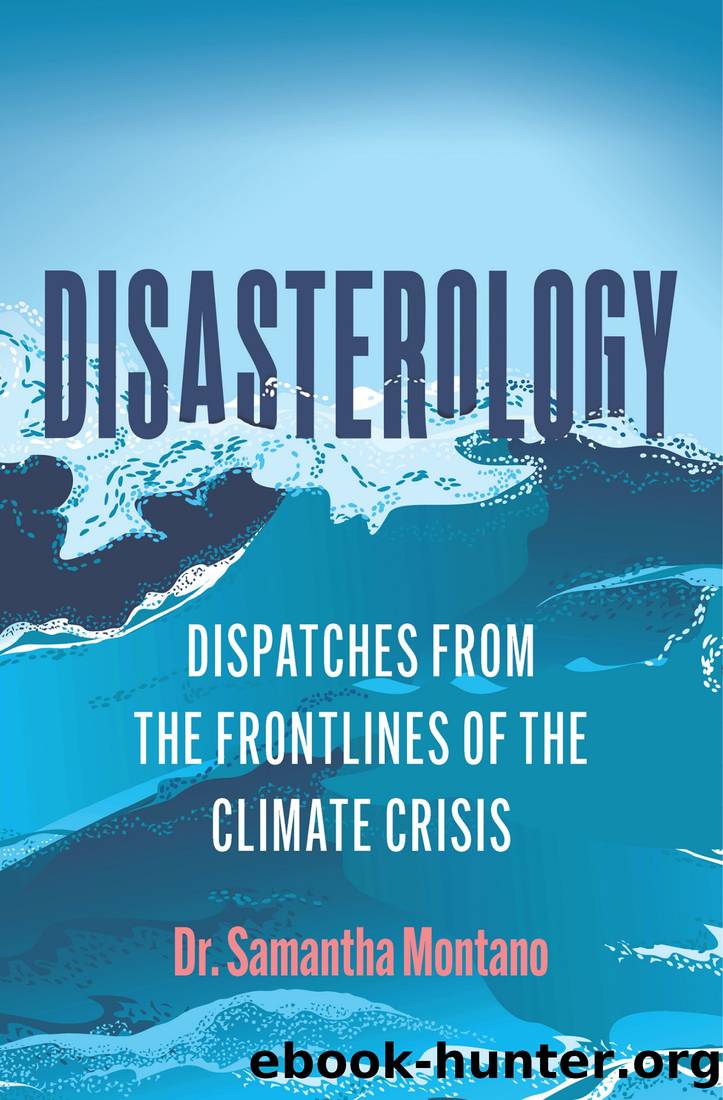Disasterology by Samantha Montano

Author:Samantha Montano [Montano, Samantha]
Language: eng
Format: epub
Published: 2021-05-31T14:20:01+00:00
* * *
The events of 2017 pushed the US emergency management system to the brink. One place after another was overwhelmed by crisis, and the broader system strained under the widespread need. The US had to contend with Harvey, Irma, and Maria in the span of just a few weeks. In the midst of the response to Maria, fifty-eight people were killed and hundreds wounded in the Las Vegas shooting, which earned the title of the deadliest massacre in modern US history.361 The end of the year also saw multiple wildfires on the West Coast, including the Tubbs Fire, at the time the largest in California history.362 In December an Amtrak train derailed in Washington State. The car dangled from an overpass onto the highway below. Three people were killed and the incident reinvigorated discussions about transportation safety. On our very best day, and with a competent administration, so many crises in such a short period of time would present major challenges.
Fast and effective response to minimize loss is what our emergency management system is supposed to be good at doing. But by the end of 2017 that system was already struggling to keep pace. By the end of October, FEMA was spending $200 million dollars a day on response and recovery efforts for the three record-breaking hurricanes and deadly wildfires in California.363 At yearâs end, initial tallies of disaster damage nationwide topped $320 billion with around twenty disasters topping $1 billion.364 In November, Brock Long testified before Congress that the agency was âtapped out.â365
Following the 2017 hurricane season, researchers found that FEMA did not have the resources or personnel to respond to simultaneous disasters, and that this was a contributing factor in the failed response to Maria. One poignant example was an investigation into the âmealsâ FEMA had provided after the storm. Puerto Ricans reported the âmealsâ they received were really just snacks made up of assorted junk food. A report from the Department of Homeland Securityâs Office of the Inspector General confirmed this was what had been provided and specifically found that the reason FEMA was unable to supply sufficient and nutritional meals was because their contracted vendors were already overwhelmed meeting the needs in Texas from Harvey.366
There is no such thing as a perfect response to a catastrophe. The very nature of catastrophe means needs will go unmet, help will be slow to arrive, and coordination will be challenging, if not impossible. When we look at the factors that created Maria, it is clear that there was plenty that could have been done long before the storm ever formed to save lives and lessen destruction. More could have been done to decrease Puerto Ricoâs vulnerability long before there ever was a hurricane. There could have been better plans and capacity could have been developed for simultaneous deployments. There could have been federal leadership that supported local leadership. There could have been better planning in the years before the stormâitâs not like it was a surprise that Puerto Rico is surrounded by water.
Download
This site does not store any files on its server. We only index and link to content provided by other sites. Please contact the content providers to delete copyright contents if any and email us, we'll remove relevant links or contents immediately.
I Have Something to Say by John Bowe(3286)
What Happened to You? by Oprah Winfrey(1476)
Doesn't Hurt to Ask by Trey Gowdy(1402)
Einstein: His Life and Universe by Walter Isaacson(1320)
Solutions and Other Problems by Allie Brosh(1033)
Disloyal: A Memoir by Michael Cohen(1024)
American Dreams by Unknown(861)
Don't Call it a Cult by Sarah Berman(843)
Infinite Circle by Bernie Glassman(831)
Home for the Soul by Sara Bird(813)
Group by Christie Tate(811)
Talk of the Ton by unknow(736)
The Silent Cry by Cathy Glass(684)
Total F*cking Godhead by Corbin Reiff(666)
Severed by John Gilmore(656)
Searching for Family and Traditions at the French Table by Carole Bumpus(650)
The Battle of Mogadishu by Matt Eversmann & Dan Schilling(615)
Before & Laughter by Jimmy Carr(607)
Things I Wish I Knew Before My Mom Died by Ty Alexander(601)
